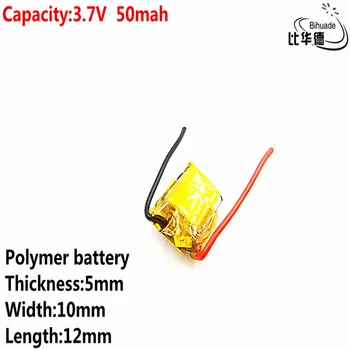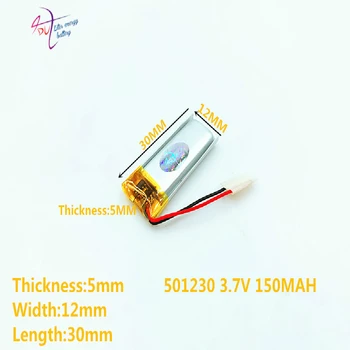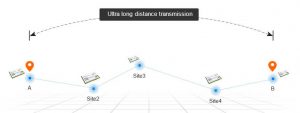HttpSendDigest("/command.cgi",user,password,dataString)
Forum Replies Created
-
AuthorPosts
-
1 September 2020 at 08:45 in reply to: Constructor difference and HardwareSerial and SoftwareSerial difference #5983
Hi Ludophot,
for
LoRa_E32 e32ttl100(2, 3,5,6,7);andLoRa_E32 e32ttl(2, 3,5,6,7)change only the variable name e32ttl100 in e32ttl.
I think you mean difference from
LoRa_E32 e32ttl100(2, 3,5,6,7); // Arduino RX <-- e22 TX, Arduino TX --> e22 RX AUX M0 M1
#include <SoftwareSerial.h>
SoftwareSerial mySerial(2, 3); // Arduino RX <-- e22 TX, Arduino TX --> e22 RX
LoRa_E22 e22ttl(&mySerial, 5, 6, 7); // AUX M0 M1
LoRa_E22 e22ttl(&Serial1, 5, 6, 7); // AUX M0 M1
the first and the second is the samething the difference is that in the first case I instantiate SoftwareSerial internally.
The last one you pass a reference of the HardwareSerial.
The better solution is to use HardwareSerial, because SoftwareSerial is an emulation of Hardware one, so to do the emulation need more processors time respect an hardware implementation of the Serial, and can be more fast.
But not all Arduino like have multiple Serial, so for Arduino UNO, if you want use debug and other you need to do Software one.
Bye Renzo
1 September 2020 at 07:34 in reply to: Projet control vidéo with Arduino and MD5 digest authentication. #5895Hi Ludopot,
I found this implementation
#include <ArduinoHttpClient.h> #include <MD5.h> HttpClient client = HttpClient(wifiConnection, adress, port); ... bool HttpSendDigest(String uri, String user, String password, String data) { //Serial.println("HttpSendDigest::POST request"); client.beginRequest(); client.post(uri,"application/x-www-form-urlencoded",data); client.endRequest(); String header =""; // read the status code and body of the response int statusCode = client.responseStatusCode(); if (client.headerAvailable()){ while(!client.endOfHeadersReached()){ header = header + char(client.readHeader()); } } String headerName = client.readHeaderName(); String headerValue = client.readHeaderValue(); String response = client.responseBody(); /* Serial.println("HttpSendDigest::Headername: "+ headerName); Serial.println("HttpSendDigest::Headervalue: "+ headerValue); Serial.println("HttpSendDigest::header: "); Serial.println(header); Serial.print("HttpSendDigest::statuscode: "); Serial.println(statusCode); Serial.println("HttpSendDigest::response: "); Serial.println(response); */ if (statusCode == 401 && headerName.equalsIgnoreCase("WWW-Authenticate")) { //Serial.println("HttpSendDigest::401+WWW-Authenticate detected"); String AuthMethod = headerValue.substring(0,headerValue.indexOf(' ')); String realm = strGetValue(headerValue,"realm=\"","\""); String nonce = strGetValue(headerValue,"nonce=\"","\""); String qop = strGetValue(headerValue,"qop=\"","\""); /* Serial.println("HttpSendDigest::AuthMethod: "+AuthMethod); Serial.println("HttpSendDigest::realm: "+realm); Serial.println("HttpSendDigest::nonce: "+nonce); Serial.println("HttpSendDigest::qop: "+qop); */ //Serial.print("HttpSendDigest::Calculate HA1..."); String HA1 = calcMD5(user+":"+realm+":"+password); //Serial.println(HA1); //Serial.print("HttpSendDigest::Calculate HA2..."); String HA2 = calcMD5("POST:"+uri); //Serial.println(HA2); String cnonce = String(random(8556822323)); //Serial.println("HttpSendDigest::cnonce: "+cnonce); //Serial.println("HttpSendDigest::Calculate authResponse..."); String authResponse =calcMD5(HA1+":"+nonce+":"+"00000001"+":"+cnonce+":"+qop+":"+HA2); //MD5(HA1:nonce:nonceCount:cnonce:qop:HA2) //Serial.println("HttpSendDigest::authResponse: "+authResponse); String authHeaderString = "Authorization: Digest username=\"" + user + "\",realm=\"" + realm + "\",nonce=\"" + nonce + "\",uri=\"" + uri + "\",cnonce=\"" + cnonce + "\",qop=auth, nc=00000001, response=\"" + authResponse + "\"";//\r\n"; //Serial.println("HttpSendDigest::authHeaderString: "+authHeaderString); //Serial.println("HttpSendDigest::---auth post---"); client.beginRequest(); client.post(uri); client.sendHeader(authHeaderString); client.sendHeader(HTTP_HEADER_CONTENT_TYPE, "application/x-www-form-urlencoded"); client.sendHeader(HTTP_HEADER_CONTENT_LENGTH, data.length()); client.beginBody(); client.print(data); client.endRequest(); //Serial.println("HttpSendDigest::---authresponse---"); header =""; // read the status code and body of the response statusCode = client.responseStatusCode(); if (client.headerAvailable()){ while(!client.endOfHeadersReached()){ header = header + char(client.readHeader()); } } headerName = client.readHeaderName(); headerValue = client.readHeaderValue(); response = client.responseBody(); /* Serial.println("HttpSendDigest::Headername: "+ headerName); Serial.println("HttpSendDigest::Headervalue: "+ headerValue); Serial.println("HttpSendDigest::header: "); Serial.println(header); Serial.print("HttpSendDigest::statuscode: "); Serial.println(statusCode); Serial.println("HttpSendDigest::response: "); Serial.println(response); */ } if (statusCode==200) { return true; } else { return false; } }than you must call like this
But you must check if the software need HTTPS because Arduino not support that protocol.
Bye Renzo
Hi hmronline,
It’s true, the sketch not working on Arduino, only in esp8266 core, try this#include "Arduino.h" #include "PCF8574.h" PCF8574 pcf8574_1(0x38); PCF8574 pcf8574_2(0x39); PCF8574* arrayOfPCF[2]; //The setup function is called once at startup of the sketch void setup() { Serial.begin(115200); pcf8574_1.pinMode(P0, OUTPUT); pcf8574_1.pinMode(P1, OUTPUT); pcf8574_1.pinMode(P2, OUTPUT); pcf8574_2.pinMode(P1, OUTPUT); pcf8574_2.pinMode(P2, OUTPUT); pcf8574_2.pinMode(P3, OUTPUT); pcf8574_1.begin(); pcf8574_2.begin(); arrayOfPCF[0] = &pcf8574_1; arrayOfPCF[1] = &pcf8574_2; } void loop() { arrayOfPCF[0]->digitalWrite(P1, HIGH); arrayOfPCF[1]->digitalWrite(P1, HIGH); delay(2000); arrayOfPCF[0]->digitalWrite(P1, HIGH); arrayOfPCF[1]->digitalWrite(P1, HIGH); delay(2000); }or
#include "Arduino.h" #include "PCF8574.h" PCF8574 pcf8574_1(0x38); PCF8574 pcf8574_2(0x39); PCF8574 arrayOfPCF[2] = {pcf8574_1, pcf8574_2}; //The setup function is called once at startup of the sketch void setup() { Serial.begin(115200); pcf8574_1.pinMode(P0, OUTPUT); pcf8574_1.pinMode(P1, OUTPUT); pcf8574_1.pinMode(P2, OUTPUT); pcf8574_2.pinMode(P1, OUTPUT); pcf8574_2.pinMode(P2, OUTPUT); pcf8574_2.pinMode(P3, OUTPUT); pcf8574_1.begin(); pcf8574_2.begin(); } void loop() { arrayOfPCF[0].digitalWrite(P1, HIGH); arrayOfPCF[1].digitalWrite(P1, HIGH); delay(2000); arrayOfPCF[0].digitalWrite(P1, HIGH); arrayOfPCF[1].digitalWrite(P1, HIGH); delay(2000); }Bye Renzo
I try to compile my sketch and no error, can you post your code??
Hi hmronline,
I think something like this can work#include "Arduino.h" #include "PCF8574.h" PCF8574 pcf8574_1(0x38); PCF8574 pcf8574_2(0x39); PCF8574 arrayOfPCF[2]; //The setup function is called once at startup of the sketch void setup() { Serial.begin(115200); pcf8574_1.pinMode(P0, OUTPUT); pcf8574_1.pinMode(P1, OUTPUT); pcf8574_1.pinMode(P2, OUTPUT); pcf8574_2.pinMode(P1, OUTPUT); pcf8574_2.pinMode(P2, OUTPUT); pcf8574_2.pinMode(P3, OUTPUT); pcf8574_1.begin(); pcf8574_2.begin(); arrayOfPCF[0] = pcf8574_1; arrayOfPCF[1] = pcf8574_1; } void loop() { arrayOfPCF[0].digitalWrite(P1, HIGH); arrayOfPCF[1].digitalWrite(P1, HIGH); delay(2000); arrayOfPCF[0].digitalWrite(P1, HIGH); arrayOfPCF[1].digitalWrite(P1, HIGH); delay(2000); }Give me a feedback.
Bye Renzo11 August 2020 at 16:12 in reply to: Improved Z Axis for Cyclone PCB Factory: Missing part on Thingiverse #5521Hi Dan-Åke Asp,
sorry for the problem, but the thingiverse account is not updated (no time to do that), I update only this site at this link
http://mischianti.org/improved-z-axis-for-cyclone-pcb-factory/
there you can find all the updated parts.
Bye Renzo
23 July 2020 at 07:47 in reply to: EByte LoRa e32 not working on esp32: sends a random number, the other reads #5435Hi Alejandro,
yes, can be an usefully features, but not so simple to develop, the message in the buffer can be not in sequence, and the order in a long transmission can change with the enviroenment condition.
But when I have more time I think how to do that.
Bye Renzo
20 July 2020 at 14:04 in reply to: EByte LoRa e32 not working on esp32: sends a random number, the other reads #5399Hi Alejandro,
EByte response me
Hi Renzo,The single packet limit is 58 bytes. It means one transmission can only send 58 bytes. it will cut your data into serveral 58-byte packet to send.The buffer is 512 bytes, it means you can input maximum 512 bytes of data by UART, and the module will cut the 512-byte of data into several packet to send all those 512 byte data in serveral times.------------------------------
--- Best Regards, The packet size is 58Bytes if you put a stream of packet the device send they one to one not like a single package.
Bye Renzo
20 July 2020 at 08:09 in reply to: EByte LoRa e32 not working on esp32: sends a random number, the other reads #5388Hi Alejandro,
then, on this point it is not very clear,initially I left the possibility of sending packets of any size, but they are truncated at 58byte,
and on the specifications page they write “TX length 58byte Maximun capacity of singlepackage”,
so I interpreted what they have written later as if you can send packet in series (even if not yet transmitted) until the buffer is filled,
and I add new receive message method this days
ResponseContainer rs = e32ttl.receiveMessageUntil();that if you receive more than one String message at the same time can read single message instead all message in the buffer.
but if you had the same doubt you too, I can try to send 58 bytes and then the rest.
But if the size is not relevant the upgraded version e22 (I’m doing the library now) have packet size variable (max 240byte) but if there are no limit why to manage packet size?
But as soon as I find time I do another test.
Keep in touch.
Bye Renzo
17 July 2020 at 14:43 in reply to: I need Help with a Bird GPS traker (GSM and Radio with sensors) project #5347Hi,
for the power, if It isn’t too big a panel like this
without a resin they are flexible and can cover all the pakage, probably can be sufficient to recharge the device quite fast.
There are some type of battery for bracelet or similar very small but about 50mha

AliExpress.com Product – Liter energy battery Good Qulity 3.7v polymer lithium battery 50mah 501012 is suitable for I7 bluetooth headset MP3 MP4
The drone battery can be quite small,
AliExpress.com Product – 051230 501230 150mah BT150 Bluetooth Headset 3.7V lithium polymer batteryFor LoRa I finish first release of Ebyte E22 LoRa devices that have a repeater function, and If we must track a small area like 60km with some device as repeater put in the area can cover with RF the transmission.

But We need more detail to do an evaluation.
Bye Renzo
12 July 2020 at 13:02 in reply to: I need Help with a Bird GPS traker (GSM and Radio with sensors) project #516611 July 2020 at 22:38 in reply to: EByte LoRa e32 not working on esp32: sends a random number, the other reads #5159I’m happy you have find the solution.. If you need more help or you have some idea to add to the library write on Forum without problem.
Bye Renzo
10 July 2020 at 08:37 in reply to: I need Help with a Bird GPS traker (GSM and Radio with sensors) project #5129Hi JoaquinC,
I think It’s better to limit the spec to only what you really need, but for fisrt we must select some GPS small like one for drone, like this
or a radio with 8km range like
LoRa E32 device for Arduino, esp32 or esp8266: specs and basic usage – Part 1
Thank It’s important to select a rechargeable battery powerfull and light, this is a choiche that you can find when you have a base to test, but you can select a big 18650 with 3400mha
or a 523450 fot about 1000mha
If you must have less weight you can choiche a drone battery with low capacity but very small
Chan you can use a system like this to recharge
I think the microcontroller is not so important because for a lot of time It’s become in sleep mode, some SMT series have a very low power consmuption, other like PIC one or ATMega.
I think you can use also a WeMos D1, but when you are going to create a board you must use the IC not the board.
WeMos D1 mini (esp8266), pinout, specs and IDE configuration – Part 1
But you must specify more information about you want to do, like
- form factor
- weight
- distance
- frequences
and all other spec you want raised.
Bye Renzo
9 July 2020 at 07:57 in reply to: EByte LoRa e32 not working on esp32: sends a random number, the other reads #5017Hehehehehhe… Keep calmp….
The sketch I send you is fully working and tested (I do it with an esp32 devkit v1 and WeMos, I try It with an Arduino also and 2 e32 433, that you can see on photo).
Pay attention I comment the first 2 define anche change power to adapt to my devices.
We can go by step, send me your connection schema, I’m going to do the same connection, and tell me what kind of pull-up resistor you have used.
than if It’s ok I ask you to resend all the code.
Hold on, we’ll find the problem: P.
Bye Renzo
Attachments:
You must be logged in to view attached files.8 July 2020 at 23:39 in reply to: EByte LoRa e32 not working on esp32: sends a random number, the other reads #5003Hi Alejandro,
I check your code, and there are some issue, first is the type of communication setted to TRANSPARENT
But I have found an issue/problem in the library and I change It, two constructor of esp32 is ambiguous, so I change the disposition of the constructor that have specifies setting of HardwareSerial,
To undestand
LoRa_E32(HardwareSerial* serial, byte txE32pin, byte rxE32pin, byte auxPin, byte m0Pin, byte m1Pin, UART_BPS_RATE bpsRate = UART_BPS_RATE_9600, uint32_t serialConfig = SERIAL_8N1);now is
LoRa_E32(byte txE32pin, byte rxE32pin, HardwareSerial* serial, byte auxPin, byte m0Pin, byte m1Pin, UART_BPS_RATE bpsRate = UART_BPS_RATE_9600, uint32_t serialConfig = SERIAL_8N1);but in your case the code become more simpliest with the direct usage of Serial2
Here the sending code for esp32
#include "Arduino.h" //#define E32_TTL_1W //#define FREQUENCY_915 #include "LoRa_E32.h" // Not needed Serial2 have already this pins //#define RX 16 //#define TX 17 #define AUX 18 #define M0 21 #define M1 19 //HardwareSerial serial1(2); //LoRa_E32 e32ttl1w(&serial1,RX,TX, 18, UART_BPS_RATE_9600,SERIAL_8N1); LoRa_E32 e32ttl1w(&Serial2, AUX, M0, M1); void printParameters(struct Configuration configuration); void printModuleInformation(struct ModuleInformation moduleInformation); // Variables globales unsigned long interval = 15000; // interval between sends unsigned long lastSendTime = 0; // last send time byte msgCount = 0; // count of outgoing messages long randNumber; void setup() { //Inicio comunicacion serie con monitor Serial.begin(9600); delay(500); Serial.println(); e32ttl1w.begin(); //Configuro el nodo LoRa nodeConfig(); } void loop() { // Wait a few seconds between measurements. if (millis() - lastSendTime > interval) { // print a random number from 10 to 19 randNumber = random(10, 20); String trama = String(randNumber); ResponseStatus rs = e32ttl1w.sendFixedMessage(0, 3, 0x10,trama); Serial.println("Sending " + trama); Serial.println(rs.getResponseDescription()); lastSendTime = millis(); // timestamp the message msgCount++; } delay(100); } void nodeConfig(){ ResponseStructContainer c; c = e32ttl1w.getConfiguration(); Configuration configuration = *(Configuration*) c.data; configuration.ADDH = 0x0; configuration.ADDL = 0x1; configuration.CHAN = 0x10; configuration.SPED.airDataRate = AIR_DATA_RATE_010_24; configuration.SPED.uartBaudRate = UART_BPS_9600; configuration.SPED.uartParity = MODE_00_8N1; configuration.OPTION.fec = FEC_1_ON; configuration.OPTION.fixedTransmission = FT_FIXED_TRANSMISSION; configuration.OPTION.ioDriveMode = IO_D_MODE_PUSH_PULLS_PULL_UPS; configuration.OPTION.transmissionPower = POWER_20; configuration.OPTION.wirelessWakeupTime = WAKE_UP_1250; //printParameters(configuration); // Set configuration changed and set to not hold the configuration ResponseStatus rs = e32ttl1w.setConfiguration(configuration, WRITE_CFG_PWR_DWN_SAVE); Serial.print("Config: "); Serial.println(rs.getResponseDescription()); }Here the receiving code for WeMos#include "Arduino.h" //#define E32_TTL_1W //#define FREQUENCY_915 #include "LoRa_e32.h" #define RX 4 #define TX 5 #define M0 7 #define M1 6 LoRa_E32 e32ttl1w(D3, D4, D5, D7, D6); void setup() { //Inicio comunicacion serie con monitor Serial.begin(9600); delay(500); // Startup all pins and UART e32ttl1w.begin(); //Configuro el nodo LoRa nodeConfig(); } void loop() { if (e32ttl1w.available() > 0) { Serial.println("----------"); ResponseContainer rc = e32ttl1w.receiveMessage(); Serial.println(rc.data); // Is something goes wrong print error if (rc.status.code != 1) { rc.status.getResponseDescription(); } else { // Print the data received Serial.println(rc.data); } } delay(500); } void nodeConfig(){ ResponseStructContainer c; c = e32ttl1w.getConfiguration(); Configuration configuration = *(Configuration*) c.data; configuration.ADDH = 0x0; configuration.ADDL = 0x3; configuration.CHAN = 0x10; configuration.SPED.airDataRate = AIR_DATA_RATE_010_24; configuration.SPED.uartBaudRate = UART_BPS_9600; configuration.SPED.uartParity = MODE_00_8N1; configuration.OPTION.fec = FEC_1_ON; configuration.OPTION.fixedTransmission = FT_FIXED_TRANSMISSION; configuration.OPTION.ioDriveMode = IO_D_MODE_PUSH_PULLS_PULL_UPS; configuration.OPTION.transmissionPower = POWER_20; configuration.OPTION.wirelessWakeupTime = WAKE_UP_1250; //printParameters(configuration); // Set configuration changed and set to not hold the configuration ResponseStatus rs = e32ttl1w.setConfiguration(configuration, WRITE_CFG_PWR_DWN_SAVE); Serial.print("Config: "); Serial.println(rs.getResponseDescription()); }Download also the new versione of LoRa e32 library that have some fix and additional function to manage multiple string receiving.
If you need more help ask without problems.
Bye and thanks Renzo
-
AuthorPosts





